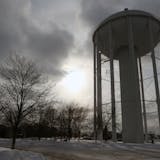Since December, half the people who left Minneapolis' temporary homeless shelter near the Franklin Avenue light-rail station have found permanent housing. The rest ended up in jail, back on the streets or their whereabouts is unknown, according to city data presented Friday.
Two people in the city's "navigation center" succumbed to overdose-related deaths.
City Council members held a public meeting with representatives from Hennepin County, nonprofits and a myriad of others who helped create and maintain the city's navigation center, a short-term solution that replaced the homeless encampment on Franklin and Hiawatha avenues last fall. The center is scheduled to close at the end of May, so human service workers are hurrying to find long-term housing for the 90 people who still live there.
At Friday's meeting, the group celebrated an unprecedented collaboration of private and government efforts that took action quickly to move the encampment into safer structures before winter.
It was also an expensive project, costing approximately $3.2 million in capital and operational expenses, said Minneapolis City Coordinator Nuria Rivera-Vandermyde.
City Council President Lisa Bender said the goal of Friday's meeting was to use the partnership to come up with longer-term solutions.
"The number of people experiencing homelessness is on the rise across the state of Minnesota. The city of Minneapolis is stepping up to do more, but we also need to do that in partnership," Bender said. "The scale of the problem is so large we really can't solve it in the city."
In Hennepin County alone, there are about 2,000 people experiencing homelessness, most concentrated in Minneapolis, according a snapshot taken by county human service workers last July. Of those, 532 had no form of shelter.


